How to Fix “Exchange Database Size has Grown Too Big” ErrorFile Repair Tool Blog
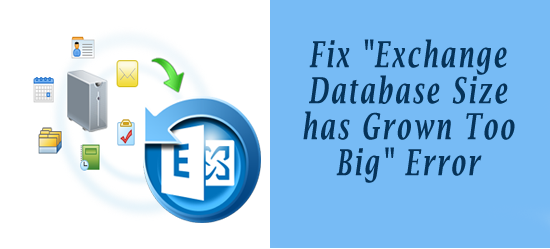
Microsoft has introduced Exchange Server in the year 1993. These files came into existence with the introduction of Exchange Server. However, the most common issue that raised by the many user is Exchange EDB file too big and it requires compression. Here, in this blog, you will get to know how exchange database size has grown too big and how the size can be reduced.
Why Exchange EDB files becomes too big?
The exchange EDB files will automatically grow in size as the data within the EDB files increases. However, the EDB files will never compress if the data is removed from the database. Let us suppose that the size of the EDB file is 15GB and if we delete 5GB mailbox or move it to any other database then the size of EDB file will remain as it is, i.e., 15GB. However, 5GB white space will be created in the database and that space will be available for the new data to be written without the increase in the file size of the database. However, the size of the database can be reduced easily with the below-mentioned solutions.
You May Also Like: Repair EDB file when you fail to access your mails
Solutions to Fix “Exchange Database Size has Grown Too Big” Error
Solution 1: If the Exchange administrator keeps the server in running mode all the time. If so, then you must be thinking about server downtime for end users. However, there are different solutions with which you can tackle with this solution.
- Create New Mailbox Database and transfer all data from the older mailbox to the newer Mailbox
- Perform Offline Defrag to shrink the EDB file
- Move the location of Mailbox Database
Solution 2: Run Eseutil to Defrag EDB Mailboxes via Exchange Management Shell
Pre- requisites
If your EDB file keeps growing to large file size abnormally and so you are willing to reduce to the file size, then there are few pre-requisites that must be fulfilled beforehand.
The database of the EDB file must be dismounted before initiating the defrag procedure. However, while defragging is under the process, users would not be allowed to access their emails at any cost.
While the process is in working state, a new file will be created. However, the old file along with the new file as well as the temporary file generated by Eseutil will also exist on your system. There should be enough storage space exist on drive son that it can enable the defragmentation procedure in order to perform successfully.
However, if there is a not enough storage space exist on hard drive then different location can be specified while executing Eseutil command.
Defrag Procedure
- In order to perform defrag procedure, you have to launch Exchange Management Shell and then execute the below mentioned command to dismount Mailbox database.
“C: Windows system32>cd D: Mailbox ‘database name’”
“D: Mailbox ‘database name’> Dismount-Database ‘database name’”
- Run Eseutil for defragging the EDB file
“D: Mailbox’database name’>eseutil /d ‘database name’.edb /t testserver defragtemp.edb”
- After, execute the following command to mount the database:
“D: Mailbox ‘database name’> mount- database ‘database name’”
After performing the above steps, the database size and the existing white spaces on the selected mailbox database can be easily examined. Then you can notice that the EDB file is compressed and all the white spaces are removed from the database. With these steps, the Eseutil execution is done successfully and you can then easily run full backup of the database.
Note: You should have free disk space of at least 10 percent the size of the EDB database that you wish to defrag.
You May Also Like: How to Repair Exchange database with Eseutil and Isinteg Command Lines
Solution 3: Move Mailbox Database using Exchange Management Console:
Exchange Management Console can be used to dismount database and this can be easily done by selecting the Mailbox then you have to right click on it and then simply select Dismount Database option.
Now launch Exchange Management Console and then select Mailbox under Organization Configuration.
After this, elect the mailbox that actually needs to be moved, then right click on it and then select Move Database path.
In the screen, there appeared Move Database path windows that provide new location for data files and log files, After this, you have to click on Move to continue with the procedure to reduce the file size.
You will notice that a message will appear alerting that the database must be dismounted temporarily for accomplishing Move database operation. After this, you have to click on Yes to continue the procedure.
You May Also Like: How to Restore Accidentally Deleted Public Folder Database from .EDB File
Alternate Solution – Modify the Register Editor Settings
Alternatively, there is a solution that can reduce the edb file size by selecting to change the size specifications for the database by following the below-mentioned procedure. Also, you can split the EDB file to prevent large data loss scenarios.
- In Register Editor, search for the given path:
“HKEY_LOCAL_MACHINESYSTEMCurentControlSetServicesMSExchangeISPrivate-”
- If the “Database Size Limit in GB” DWORD exists under “Private-[database GUID]” then you can modify the value to GB. If it doesn’t appear then you can simply create DWORD “Database Size Limit in GB”, and then you can set storage limit in Gigabytes.
- Relaunch the Exchange Information Store
- In the Event Viewer, you have to then check for “Event ID 1216” to access the current size of the database.
You May Also Like: How to Recover Lost/Deleted Mailboxes in Exchange Server 2003?
Ultimate Solution to Fix Exchange Database Errors
You can easily fix any kind of error related to exchange database with Exchange Server File Repair. The steps involved in the repair procedure are mentioned below.
 |
 |
 |
Steps for How to Repair Exchange Database:
Step 1: Click on ‘open EDB File’ and choose the EDB file or to search the files you may click on ‘Find EDB File‘.
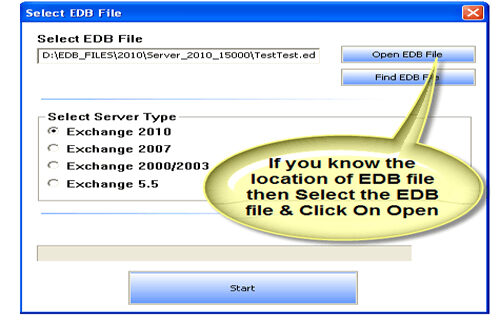
Step 2: Select the MS Exchange Server type and click ‘Start’ button.
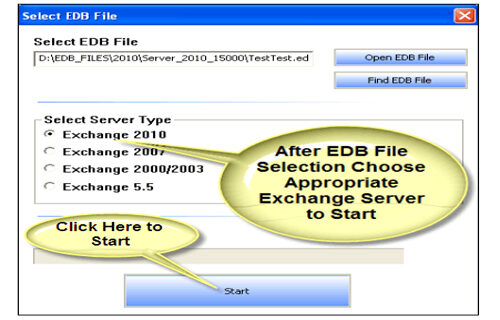
Step 3: Select the scanning types, ‘Quick Scan’ or ‘Extensive Scan’ and click ‘OK’.
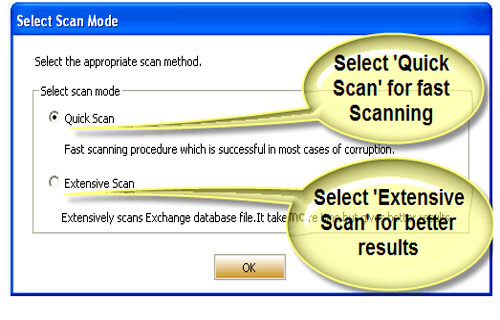
Step 4: Recoverable file and folders are presented in the left panel; you may see the preview of the item by clicking.

Step 5: Now select the mailbox folders to recover and then click on the ‘Save mailboxes’ icon. Fill the destination drive or folder in a dialog box and click ‘OK’.
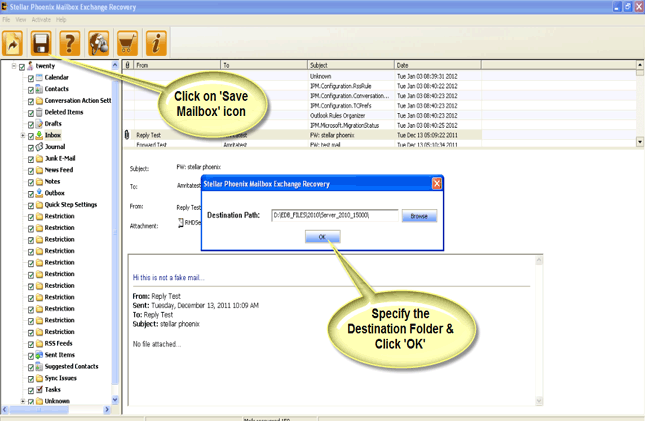
Step 6: And the selected Data will be recovered.
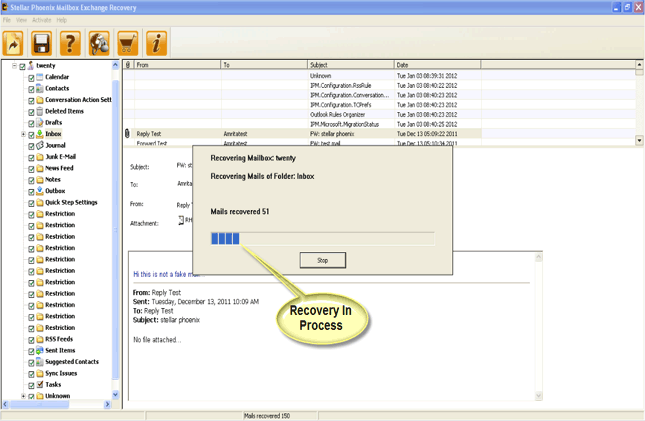
Conclusion:
With these aforementioned solutions, you can easily increase EB data storage capacity which in turn reduced the Exchange database corruption chances to a larger extent. However, if you ever come across any errors or corruption related to EDB database then you can easily repair and recover the database with the Exchange Server File Repair. This tool will allow you get everything you have lost in the corrupted database.

